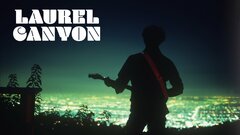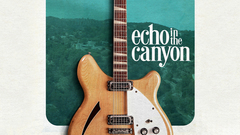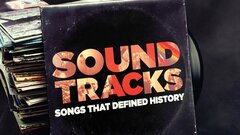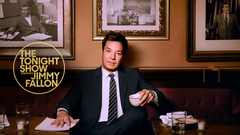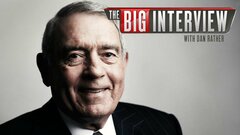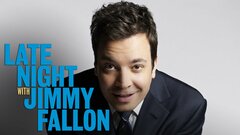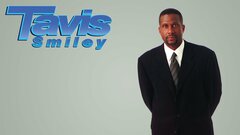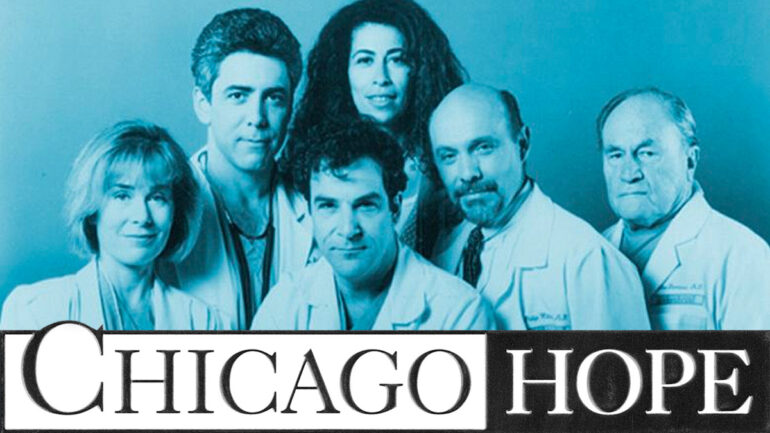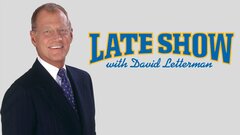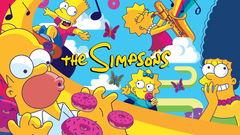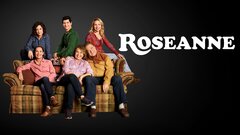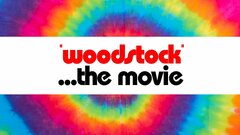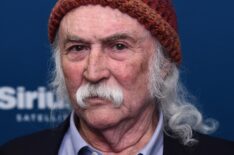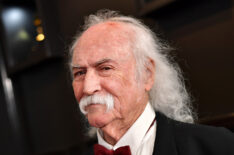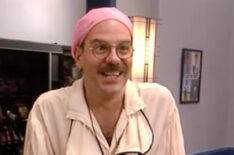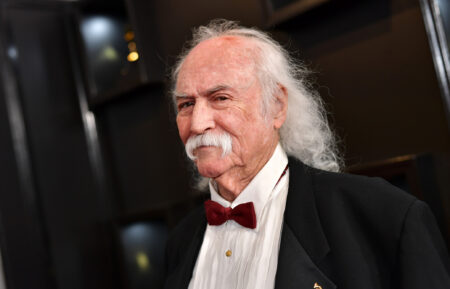One of the most popular rock artists of the 1960s and '70s, as well as one of the most troubled, David Crosby's soaring vocals were the cornerstone of two of the decade's most popular and influential groups, The Byrds and Crosby, Stills & Nash. As a member of both groups, Crosby was a pioneering figure in the development of folk-rock and the West Coast rock scene, which came to dominate American pop and rock-n-roll in the 1970s.
But his accomplishments with both groups, which earned him two entries into the Rock and Roll Hall of Fame, were often overshadowed by his long and devastating battle with drug abuse, which not only ruined his creative career but also nearly ended his life. He turned his life around in the late 1980s, whereupon he resumed his partnership with Stephen Stills, Graham Nash and their on-again, off-again fourth member, Neil Young, while forging new musical directions with an adopted son, Jeff Raymond, in the band, Crosby, Pevar & Raymond.
An unexpected late-career renaissance led to a string of new solo albums after Crosby's 70th birthday, which many fans considered among his finest work. While Crosby's music remained an enduring inspiration for generations of folk-rock musicians, it was his story of survival and redemption that ensured him a place in the music history books.
David Van Cortlandt Crosby was born August 14, 1941 in Los Angeles, the second of two sons by Academy Award-winning cinematographer Floyd Crosby - who won a Golden Globe for his work on the classic Western "High Noon" (1952) - and Aliph Van Cortlandt Whitehead. Education was not Crosby's strong suit, and according to his own words, he was expelled from nearly every school he attended.
Along the way, however, he developed an interest in acting and music. As a teenager, he played the coffeehouse circuit with his older brother, Ethan, and briefly studied drama at Santa Barbara City College. Music eventually became his main focus, and he dropped out of school to move to Greenwich Village. There, he and his brother performed with Les Baxter's Balladeers, while Crosby cut his first solo recording in 1963.
Upon returning to L.A., Crosby fell in with fellow folk veterans Roger McGuinn and Gene Clark and formed a trio, the Jet Set, which sought to blend the tight harmonies of folk music with the Beatles' pop-rock beat. After bringing aboard drummer Michael Clarke and bassist Chris Hillman, the group -renamed The Byrds - recorded a version of Bob Dylan's then-unreleased song "Mr. Tambourine Man," which immediately rose to the top of the pop charts in 1965.
While McGuinn was responsible for the Byrds' signature 12-string guitar song, Crosby was the chief architect of its vocal harmonies, as well as the band's flirtations with psychedelia such as "Eight Miles High." But disagreements over musical direction and content eventually created a schism within the band that resulted in Crosby's departure shortly after their appearance at the 1967 Monterey International Pop Festival.
After producing Joni Mitchell's 1968 debut album, Crosby became acquainted with Stephen Stills, formerly of the country-rock outfit Buffalo Springfield. The duo began singing together, and soon added Graham Nash, who had recently departed the British rock group The Hollies, to their informal sessions. Together, they formed Crosby, Stills & Nash (CSN), one of rock-n-roll's first "super groups," and one of the most popular acts of the Sixties counterculture.
Their eponymous debut album broke the Top 10 on the album charts upon its release in 1969, shortly before the group added Stills' former Buffalo Springfield bandmate Neil Young to form Crosby, Stills, Nash & Young (CSN&Y). The quartet made their second live appearance together at the Woodstock Festival in August of that year, and released a highly anticipated second album, Déjà Vu, which topped the album charts in early 1970.
In addition to anchoring the groups' celebrated harmonies, Crosby brought social commentary with "Long Time Gone" and "Wooden Ships," both from Crosby, Stills & Nash; the former addressed the assassination of Robert F. Kennedy, while the latter, co-written by Stills and Jefferson Airplane's Paul Kanter, imagined a nightmare scenario in the wake of a nuclear holocaust.
With the success of CSN and CSN&Y came Crosby's first solo album, the sonically ambitious If I Could Only Remember My Name (1971), as well as well-received tours and records with Graham Nash as Crosby & Nash. But the foundation of Crosby, Stills, Nash & Young had begun to crumble under the weight of infighting and personal ambition. Attempts to record a new album in 1973 fell apart due to bickering, and a 1974 arena tour was fraught with conflict. Crosby also attempted to reignite The Byrds with a 1973 reunion album, Byrds, featuring the original lineup, but it failed to connect with listeners.
He would find greater and more consistent success as a session musician, often with Nash as a vocal duo, on hit songs by James Taylor ("Mexico"), Elton John, Jackson Browne and others.
While Crosby struggled professionally to find relevancy in the 1970s, his personal life was slowly descending into a maelstrom of drug and alcohol addiction. The 1969 death of his girlfriend, Christine Hinton, elevated Crosby's casual drug use to debilitating levels, and successful reunions of Crosby, Stills & Nash in 1977 and 1982 were undermined by numerous arrests for drug possession and illegal weapons charges.
He was ordered to a rehabilitation facility in 1985 in lieu of serving jail time, but fled the clinic, which earned him nine months in a Texas state penitentiary. He emerged sober in 1986, and penned a harrowing account of his rise and fall from stardom in his 1989 autobiography, Long Time Gone.
Two years later, Crosby was inducted into the Rock and Roll Hall of Fame as a member of The Byrds. Around this time, he also invited troubled child star Drew Barrymore to come live with him in an attempt to help her achieve sobriety, as she had been dealing with addiction and attempted suicide during her teen years. Barrymore would later credit Crosby with helping to save her life.
His renewed health allowed for Crosby, Stills & Nash to settle into a yearly run of tours and records, though the latter saw diminishing returns with each subsequent release. Crosby briefly flirting with acting, most notably as an AA sponsor on "The John Larroquette Show" (NBC, 1993-96) and in the films "Hook" (1991) and "Backdraft" (1991). He also issued two solo albums, Oh Yes I Can (1989) and A Thousand Roads (1993), both of which featured a galaxy of admiring guest musicians, from Nash and Taylor to Bonnie Raitt and Phil Collins - the latter of whom not only tapped Crosby to provide vocals for his 1993 single "Hero" but paid for a liver transplant when the musician's health took a downward turn in 1995.
His liver problem was one of several personal hurdles that Crosby faced in the mid-'90s, including severe injuries from a motorcycle accident and the loss of his Los Angeles home in a 1994 earthquake. A brief respite from this catalog of unfortunate circumstances came in 1997 when Crosby, Stills & Nash were inducted into the Rock and Roll Hall of Fame.
In the midst of this tumultuous period, Crosby had two profound, life-changing experiences regarding his family and his past. He gained a son and daughter in James Raymond and Erika Keller, whom he had conceived in 1962 and 1966 and subsequently gave up for adoption.
Raymond had unknowingly followed in his father's footsteps by writing music for film and television, and upon meeting his father, together they formed Crosby, Pevar & Raymond (CPR) with guitarist Jeff Pevar. The trio enjoyed modest success among classic rock fans, issuing two studio albums and two live CDs before parting in 2004. At the same time, Crosby learned that his younger brother Ethan had been found dead by his own hand in a remote section of the northern California wilderness.
Ethan Crosby had grown disillusioned with attempts to launch his own music career in the early 1970s, and gradually withdrew from society, living off the land while struggling with mental illness. In his suicide note, he thanked his brother for his kindness.
The dawn of the new millennium saw Crosby back in the spotlight with Crosby, Stills, Nash & Young, which had settled their differences and released a critically acclaimed album, Looking Forward (1999), which generated top-selling concert tours in 2000, 2002, and 2006. He also continued to tour with Nash as Crosby & Nash, and was featured prominently with his old bandmate on David Gilmour's 2006 solo album, On an Island.
There were also two additional books, an oral history of celebrities and the civil rights movement called Stand Up and Be Counted (2000) and a second volume of autobiography called Since Then: How I Survived Everything and Lived To Tell About It (2005). Crosby also made headlines when it was revealed that he was the biological father of two children conceived by artificial insemination by Melissa Etheridge's life partner, Julie Cypher. In 2007, Crosby released Voyage, a box set overview of his career with the Byrds, CSN, and as a solo artist.
After several years of touring as a solo act and with various permutations of CSN&Y, Crosby returned to his long-dormant solo career with 2014's Croz, which drew uniformly strong reviews and the highest chart placing of any of his solo albums since his debut 43 years previously. It was quickly followed by 2016's Lighthouse and 2017's Sky Trails, both of which emphasized the experimental and jazz influences that had always been in the background of Crosby's music, and which earned approving comparisons to another troubled Southern California troubadour, Tim Buckley.
David Crosby died on January 19, 2023 at the age of 81.



